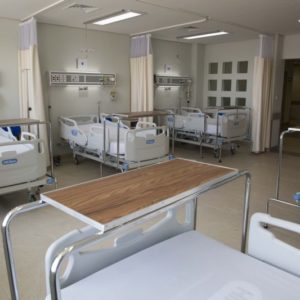Hospitals are filled with noise; noise from patients and visitors, doctors and nurses, technologies and machines. The list goes on as to what creates noise in a hospital environment, but the ‘one-size-fits-all’ design does not take into account how these noises affect patients as well as staff. Furthermore, doctors are often prescribing plenty of rest in order to speed up the recovery process, but with loud noises around hospital 24/7 the patient often has to endure sleep deprivation and discomfort while healing.
Hospital Noise Issues – By the Numbers
Let’s begin by taking a look at a couple of acoustical studies conducted in hospital environments:
- The University of Chicago’s Pritzker School of Medicine evaluated the sleep patterns of 106 patients over the course of a year. The results of this study showed that the peak noise level that a patient was exposed to reached more than 80 decibels (imagine how loud a chainsaw is and pretend you’re trying to sleep just 20 feet away!). In addition to this, ICU noise levels reached 67 decibels and surgical wards, 42 decibels were reached. 42% of patients reported being woken up by noise and many reported sleeping less than average while in the hospital.
- The VA Boston Healthcare System used noise meters to measure the level of noise in a nine-bed unit which recorded up to 66 decibels in hallways and 74 decibels in the loudest patient room. How comfortable would you be trying to recover with a vacuum cleaner constantly running next to you?
- Johns Hopkins Hospital in Baltimore conducted a study which led to the results of 70 decibels in five cancer, pediatric, and medical surgical units.
These may just seem like a bunch of random numbers, but to put it into perspective, the World Health Organization recommends that the ambient noise level in a hospital should remain around 35dB and not reach more than 40dB; however, most hospitals average around 48 decibels – the equivalent of a large electrical transformer.
Not only does hospital noise affect the recovery time for patients, but it also negatively affects the staff that are exposed to the noisy environment on a daily basis. Most nurses report exhaustion, depression and irritability. Along with these side effects, there is often miscommunication between staff members as they are not able to hear their colleagues correctly when exposed to high levels of noise, putting both staff and patients at risk.
MORE: Healthcare Acoustics and Hospital Sound Studies
Finally, let’s touch on HIPPA compliance, better known as “you better keep my patient history secure or else…”. It is important for hospitals to take the Privacy Index (PI) into account when creating an active patient environment. PI is simply a percentage which relates to how audible a conversation is. A PI of 100%-95% represents confidential speech privacy, 94%-80% represents normal speech privacy, and anything below 80% represents minimal or no speech privacy. Acoustical solutions can easily be placed in hospitals, in between patient rooms, in order to increase the PI and allow a higher rate of patient-doctor confidentiality.
Long story short: noise affects patient recovery, it disgruntles hospital employees and a non-acoustically treated environment will lead confidential patient information to no longer remain confidential. With a few simple tweaks to the development of hospitals, such as acoustical membranes between patient rooms and sound masking in open areas, we can create an environment geared towards healing.



